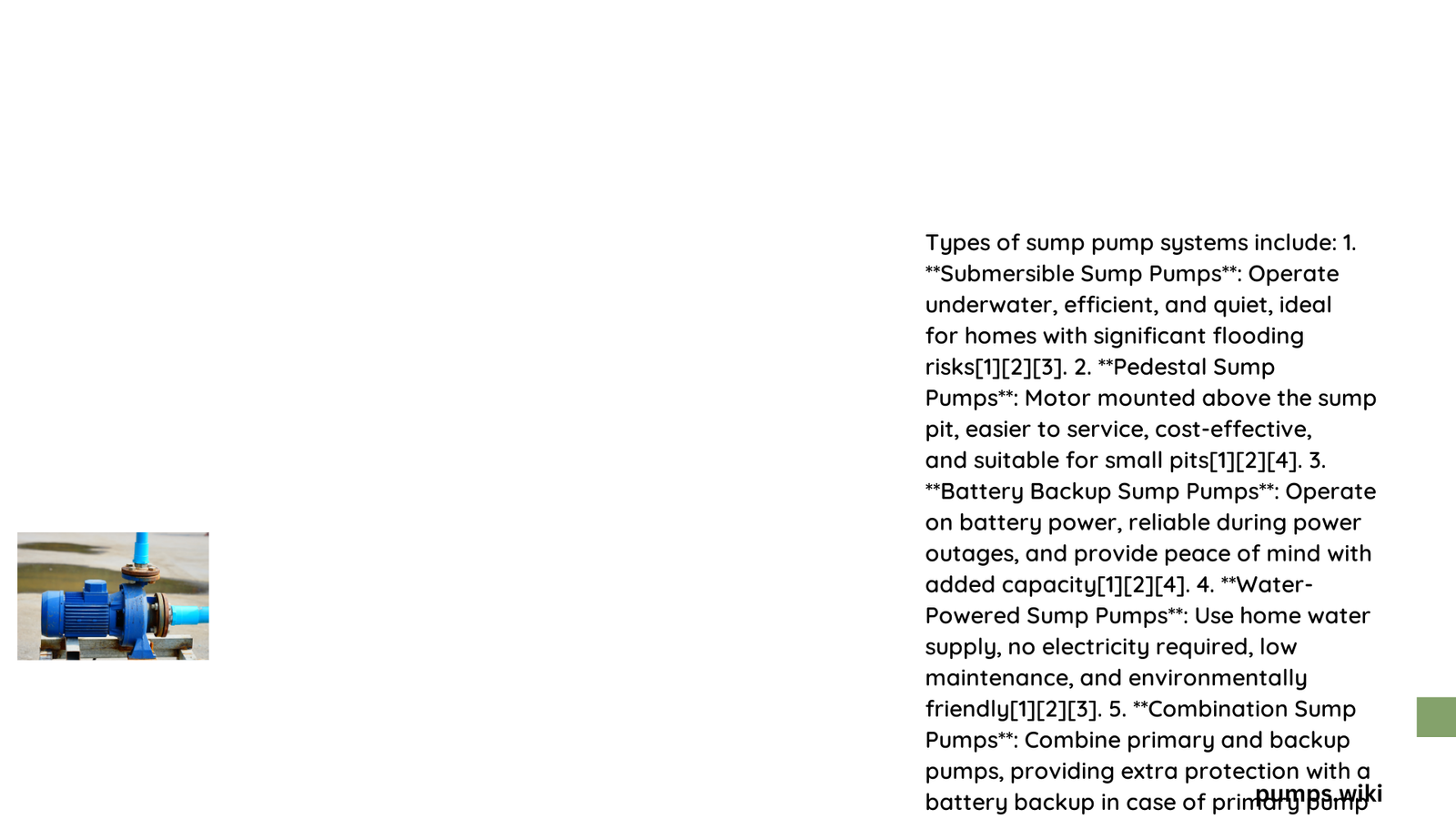Sump pump systems are critical water management solutions designed to prevent basement flooding by removing accumulated water from a sump pit. These systems come in two primary configurations: submersible and pedestal pumps, each offering unique characteristics for effectively managing groundwater and protecting residential structures from water damage. Understanding the nuanced differences between these types of sump pump systems can help homeowners make informed decisions about basement water protection strategies.
What Are the Primary Types of Sump Pump Systems?
Submersible Sump Pump Systems
Submersible sump pumps represent a sophisticated water management solution engineered to operate entirely underwater. These pumps are encased in waterproof containers, allowing them to function directly within the sump pit while maintaining exceptional performance and durability.
Key Characteristics of Submersible Pumps
| Feature | Description |
|---|---|
| Operational Location | Completely submerged in sump pit |
| Noise Level | Quieter operation |
| Debris Handling | Can manage small debris like leaves and pebbles |
| Motor Protection | Waterproof enclosure |
Advantages:
– Quieter operational performance
– Enhanced motor durability
– Capable of handling minor debris
– More compact design
– Generally more cost-effective
Potential Limitations:
– More complex repair processes
– Higher replacement costs
– Potential water damage risks
Pedestal Sump Pump Systems
Pedestal sump pumps offer an alternative design where the motor remains positioned above the waterline, connected to an impeller located at the base of the pedestal. This configuration provides distinct operational characteristics compared to submersible models.
Key Characteristics of Pedestal Pumps
| Feature | Description |
|---|---|
| Operational Location | Motor positioned above water |
| Accessibility | Easier maintenance and repair |
| Material Options | Available in cast iron and plastic |
| Water Volume Capacity | Higher water movement capabilities |
Advantages:
– Simplified repair and maintenance
– Extended motor lifespan
– Higher water displacement rates
– More accessible components
Potential Limitations:
– Louder operational noise
– Limited debris management
– Potentially less aesthetically pleasing
How Do Installation Requirements Differ?

Submersible Pump Installation Process
- Select appropriate sump basin (18-24 inches diameter)
- Ensure proper basin depth (24-36 inches)
- Install waterproof pump
- Connect discharge piping
- Verify float switch functionality
Pedestal Pump Installation Process
- Choose larger basin (20-30 inches diameter)
- Confirm basin depth (30-40 inches)
- Position pedestal securely
- Connect discharge mechanism
- Test water sensor accuracy
What Are the Cost Considerations?
Pricing Breakdown
| Pump Type | Average Price Range | Installation Cost | Maintenance Expenses |
|---|---|---|---|
| Submersible | $100 – $500 | $200 – $500 | Lower long-term costs |
| Pedestal | $150 – $600 | $200 – $500 | Moderate maintenance |
Recommended Selection Criteria
When choosing between submersible and pedestal sump pump systems, consider:
– Basement water volume
– Frequency of potential flooding
– Budget constraints
– Noise tolerance
– Maintenance capabilities
Professional Recommendations
Homeowners should:
– Consult local water management experts
– Assess specific basement characteristics
– Consider long-term water protection strategies
– Invest in quality equipment
– Schedule regular maintenance
Conclusion
Understanding the nuanced differences between submersible and pedestal sump pump systems empowers homeowners to make informed decisions about basement water management. Each system offers unique benefits, and selecting the appropriate solution depends on individual property requirements.
